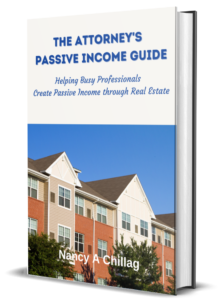If you’re a passive investor looking to invest your extra income without being a landlord, investing in multifamily real estate may be an attractive option for you. Multifamily real estate refers to buildings that contain multiple units, such as apartment complexes.
Investing in multifamily real estate can provide several benefits, such as stable cash flow, long-term appreciation potential, and tax advantages. However, not all multifamily real estate investments are created equal.
In this post, we’ll discuss some of the most relevant value add strategies in multifamily real estate today that you should consider before making an investment.
First, let’s review a few things.
What is the value-add strategy in real estate syndications?
The value-add strategy in real estate syndications involves identifying underperforming or undervalued properties and implementing strategies to increase their value.
This can include renovating existing units, improving property management, adding amenities, and making capital improvements. The goal of the value-add strategy is to increase the property’s net operating income (NOI) and cash flow, resulting in higher property values and therefore returns for investors.
Types of Value Add Strategies Relevant In Today’s Market
The most relevant types of value adds that operators should be using in this market depend on the specific property and market conditions. Some properties will respond well to certain amenities, while others may not. An experienced operator will understand market demands and be able to anticipate where best to invest capital to see an increase in NOI.
However, some common value-add strategies include renovating and upgrading existing units, implementing energy efficiency measures, improving property management, and adding amenities that meet the demands of current and potential tenants.
Operators should also consider repositioning the property, such as converting an apartment complex into a condominium or adding additional units to a building, if market conditions support it.
Let’s dive deeper.
Renovations and Upgrades
One of the most common value add strategies in multifamily real estate is to renovate and upgrade existing units. This can include updating kitchens and bathrooms, installing new flooring or appliances, or adding new amenities, such as a fitness center or pool. By improving the quality of the units, property owners can increase rental rates and attract higher-quality tenants, resulting in higher cash flow and property value.
Repositioning
Repositioning involves making significant changes to a property, such as converting an apartment complex into a condominium or adding additional units to a building. By repositioning a property, investors can take advantage of changing market conditions or demographic trends, such as an increase in demand for high-end condominiums or a shortage of affordable housing.
Management Improvements
Improving the property’s management can also be an effective value add strategy. This can include implementing new marketing strategies to attract tenants, streamlining the leasing process, or reducing operating costs through energy efficiency measures. By improving the management of the property, investors can increase occupancy rates and rental income, resulting in higher cash flow.
Capital Improvements
Capital improvements refer to larger-scale renovations or upgrades, such as replacing the roof or HVAC system, that can improve the property’s overall condition and longevity. By making capital improvements, investors can increase the property’s value and attract higher-quality tenants, resulting in higher cash flow and property value.
Alternative Uses
Finally, investors can consider alternative uses for a property, such as converting an apartment complex into a hotel or a senior living community. By considering alternative uses, investors can take advantage of changing market conditions or demographic trends, resulting in higher cash flow and property value.
Unique Amenities
As technology begins to infiltrate every aspect of our lives, tenants may come to expect different types of amenities at apartment complexes. This could include keyless entry, smart lockers in fitness areas, smart thermostats, and other tech-based amenities.
Value-Add Strategies That No Longer Work
Value-adds that no longer work include strategies that are no longer relevant to current market conditions or tenant demands. For example, adding a swimming pool to a property may have been a significant value-add in the past, but if the property is located in an area where tenants prioritize other amenities, such as a fitness center or communal workspace, it may no longer be an effective strategy.
Similarly, strategies that do not comply with current laws or regulations, such as adding additional units without proper permits, are also not effective and can lead to legal and financial consequences. It’s crucial for operators to stay current on market trends, tenant demands, and regulations to implement effective value-add strategies.
Conclusion
In conclusion, investing in multifamily real estate can provide several benefits for passive investors, but not all multifamily real estate investments are created equal. By understanding the most relevant value add strategies in multifamily real estate today, you can make an informed investment decision that meets your financial goals and risk tolerance.
As always, it’s crucial to understand the elements behind any real estate syndication you may be evaluating. Schedule a call today to chat with one of our investment professionals. We’d be happy to answer any questions you have about the business plan and strategy behind any deal, present or past.


